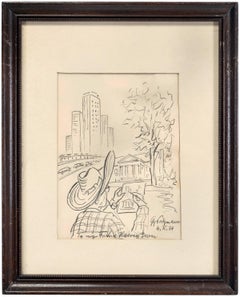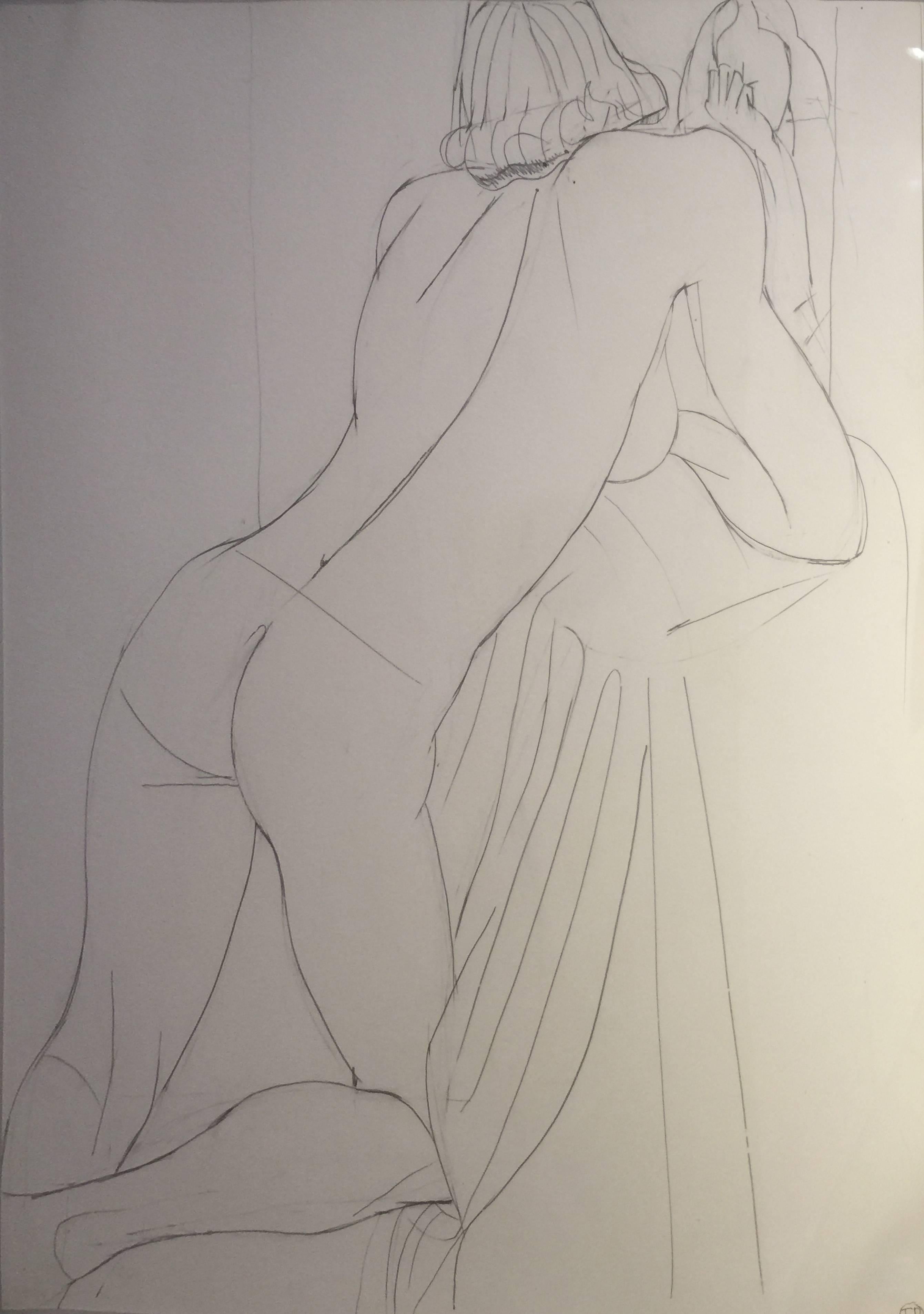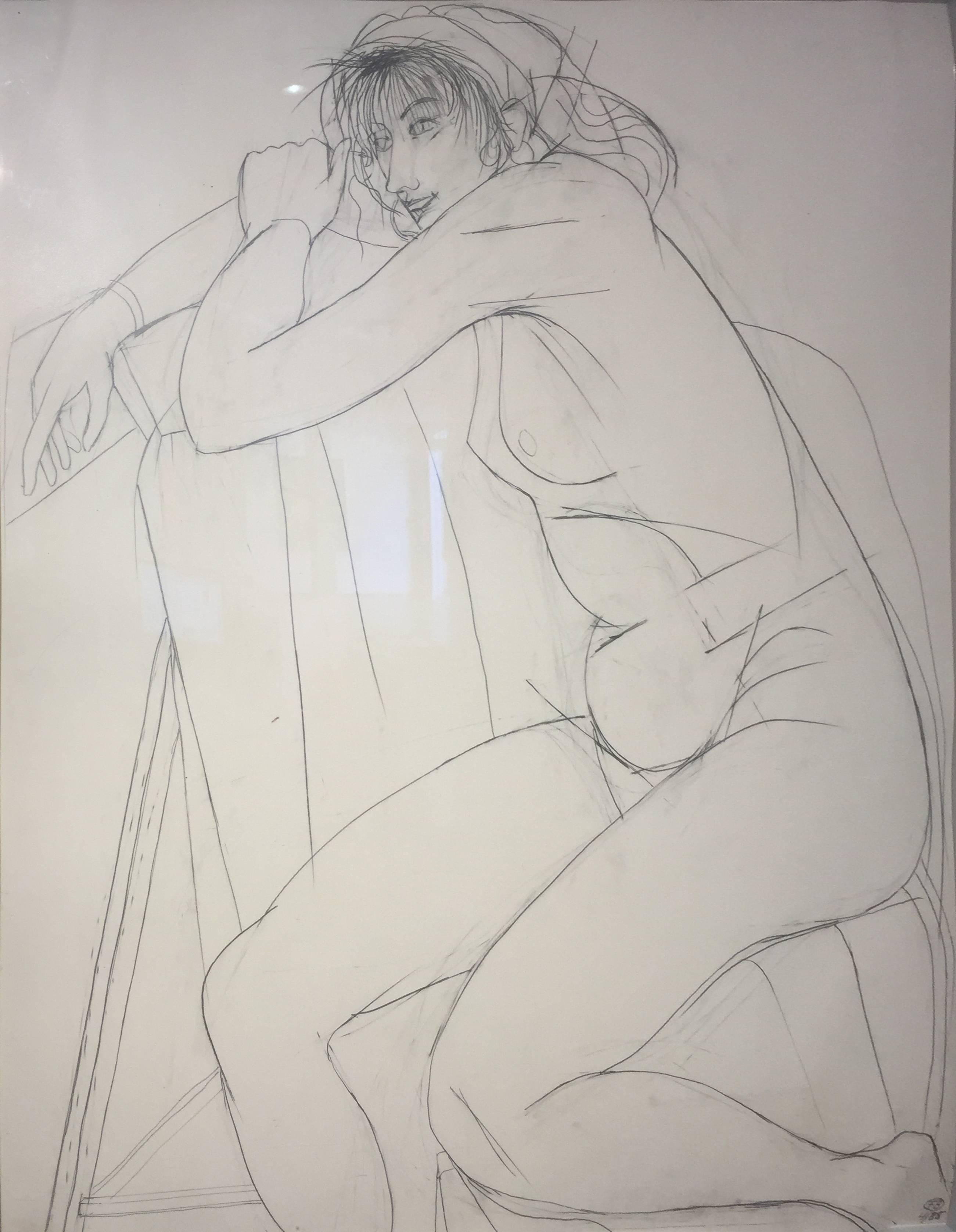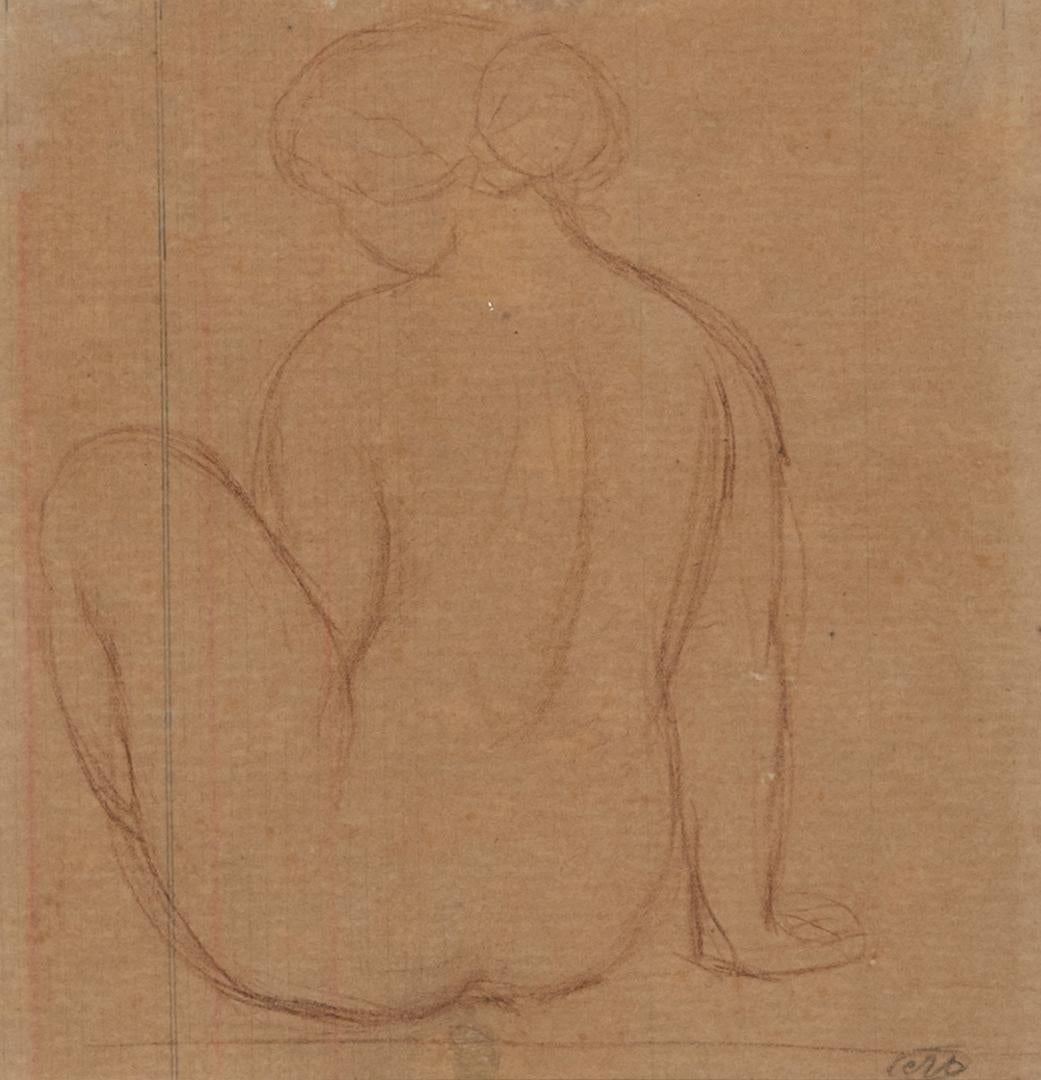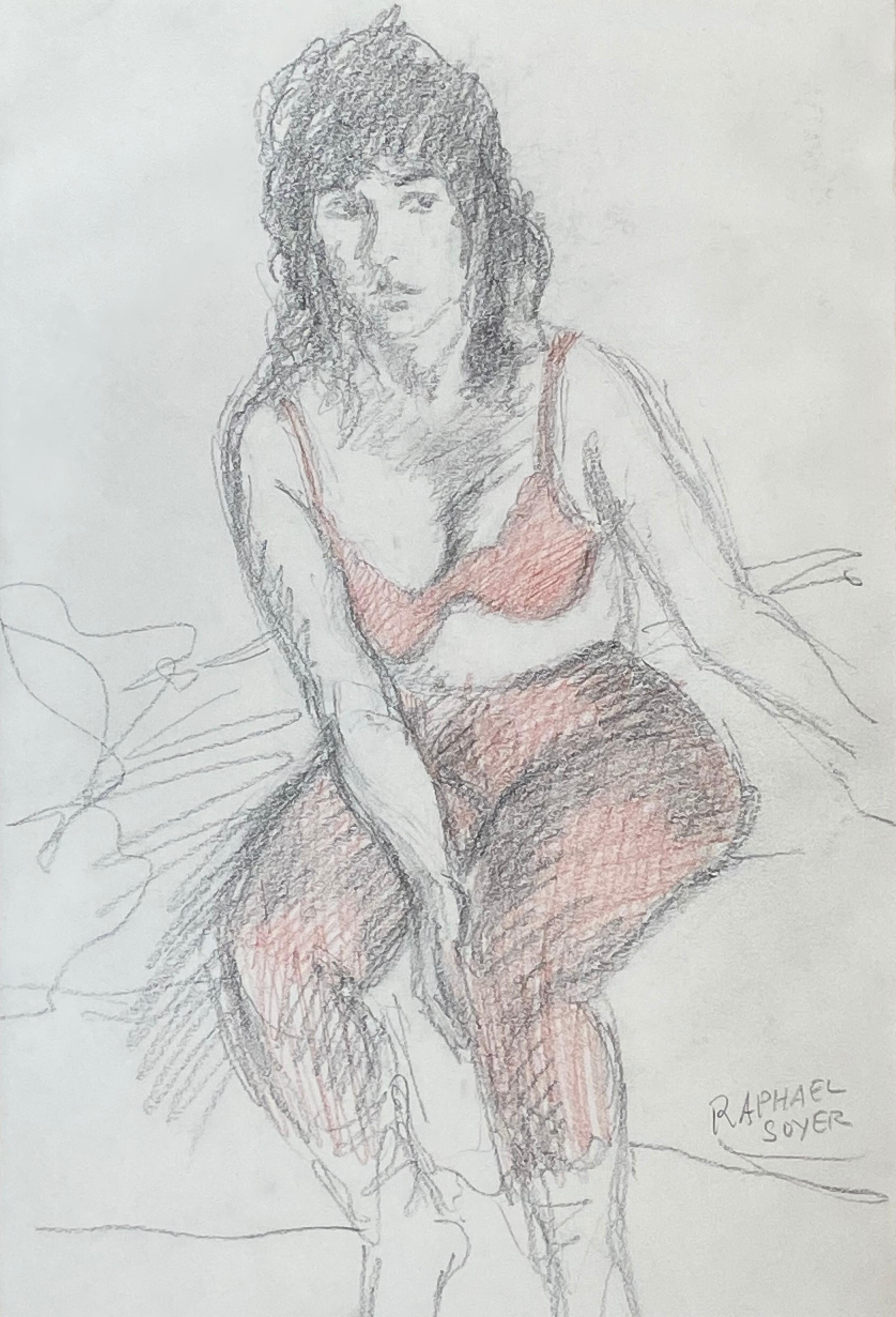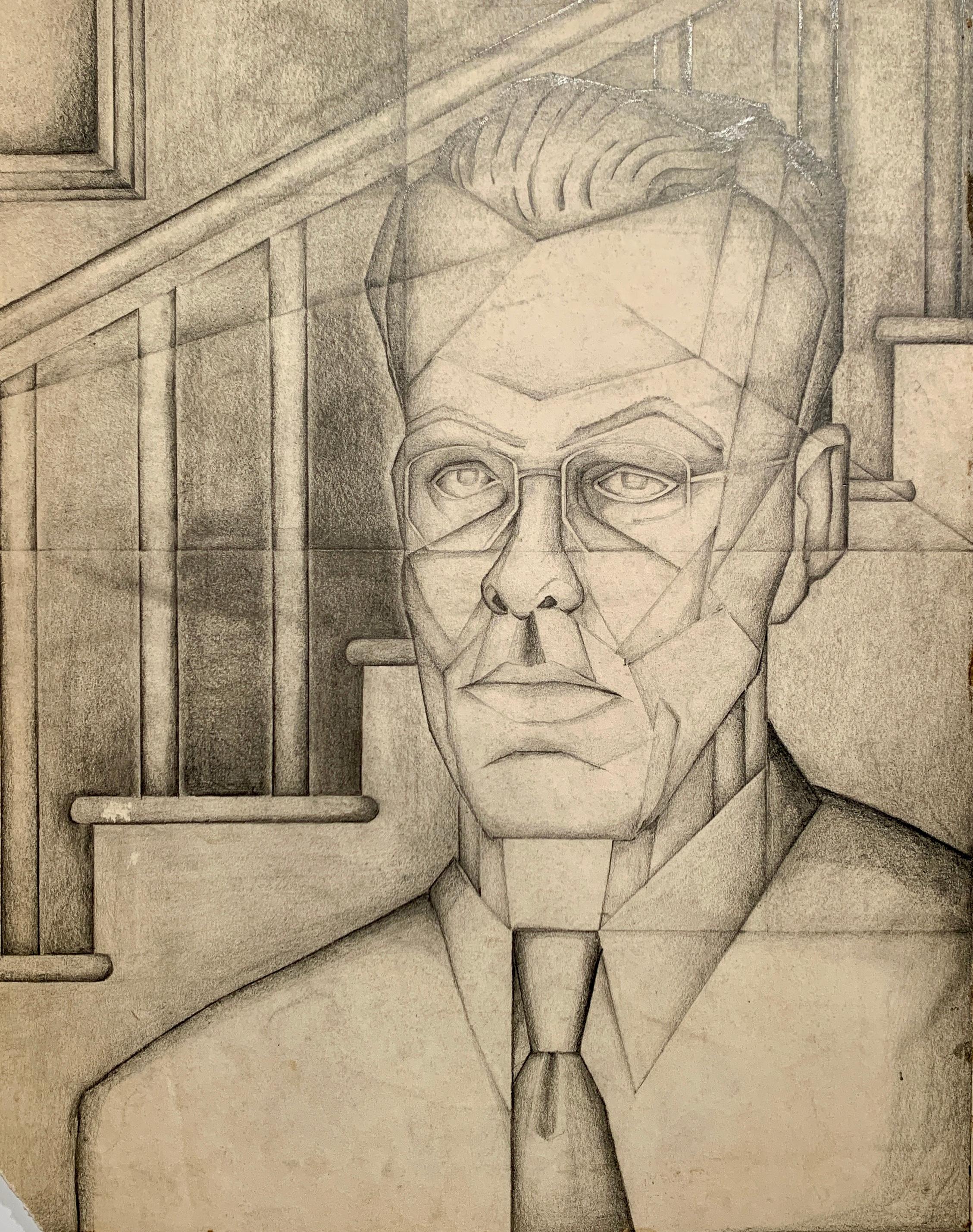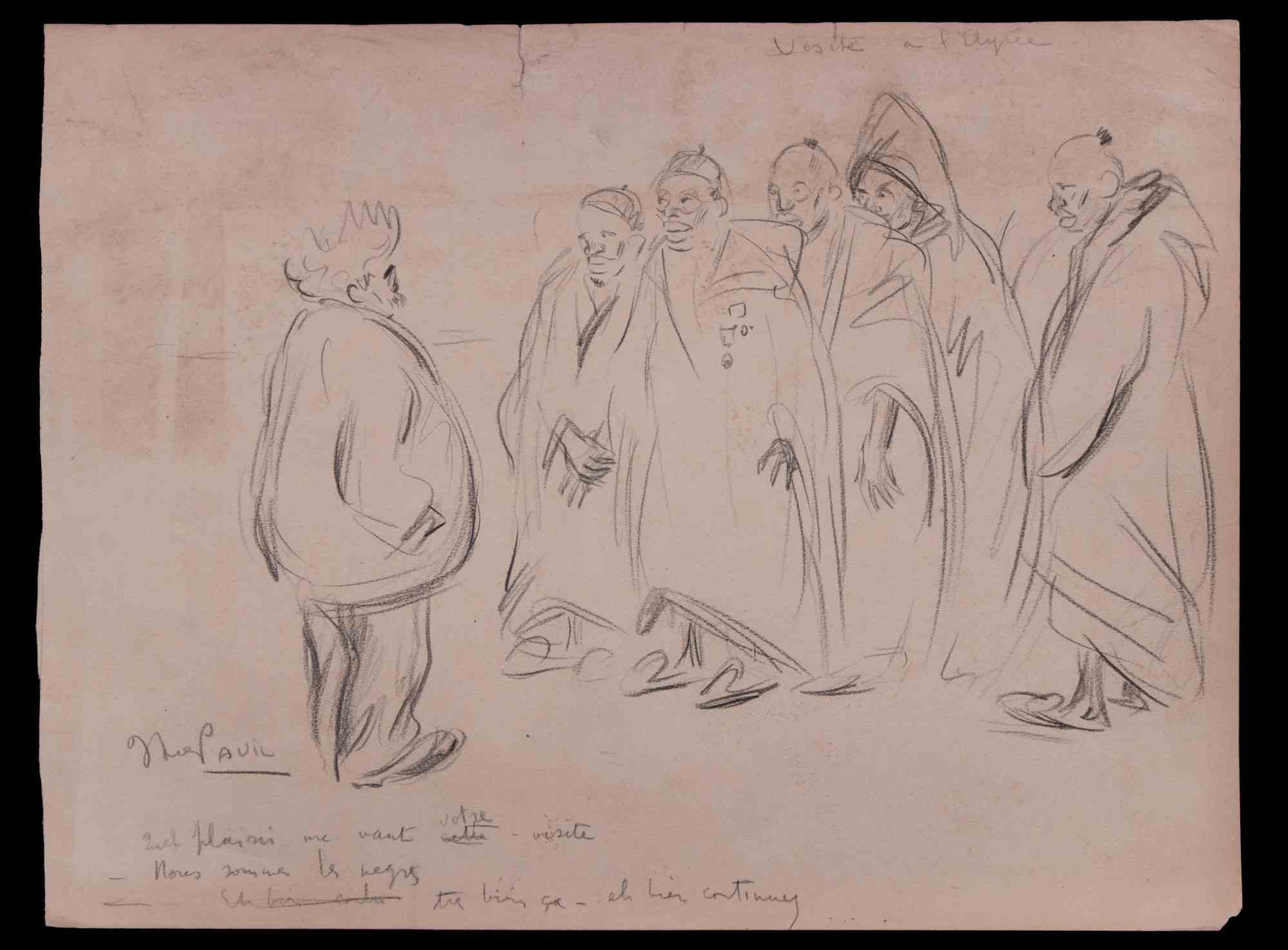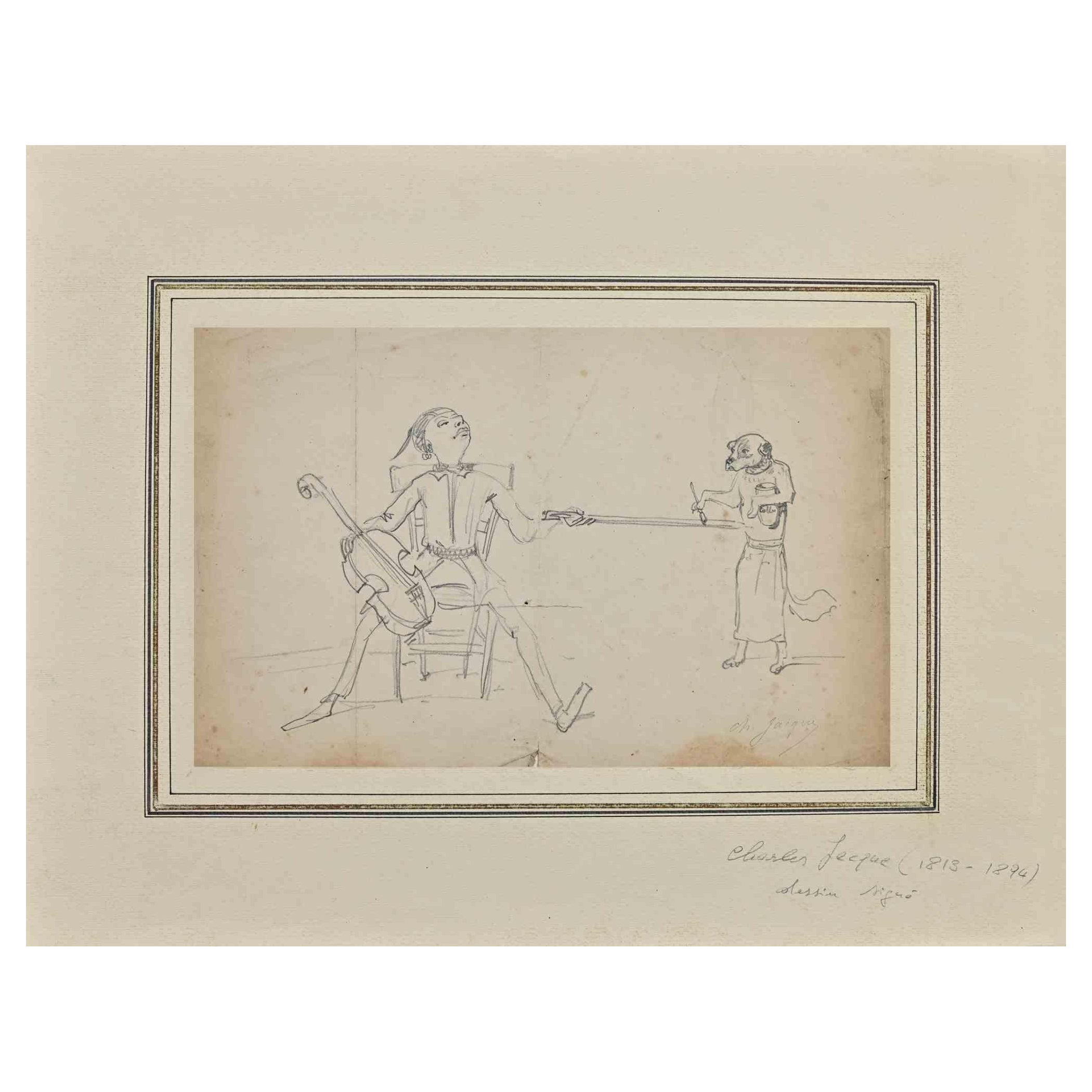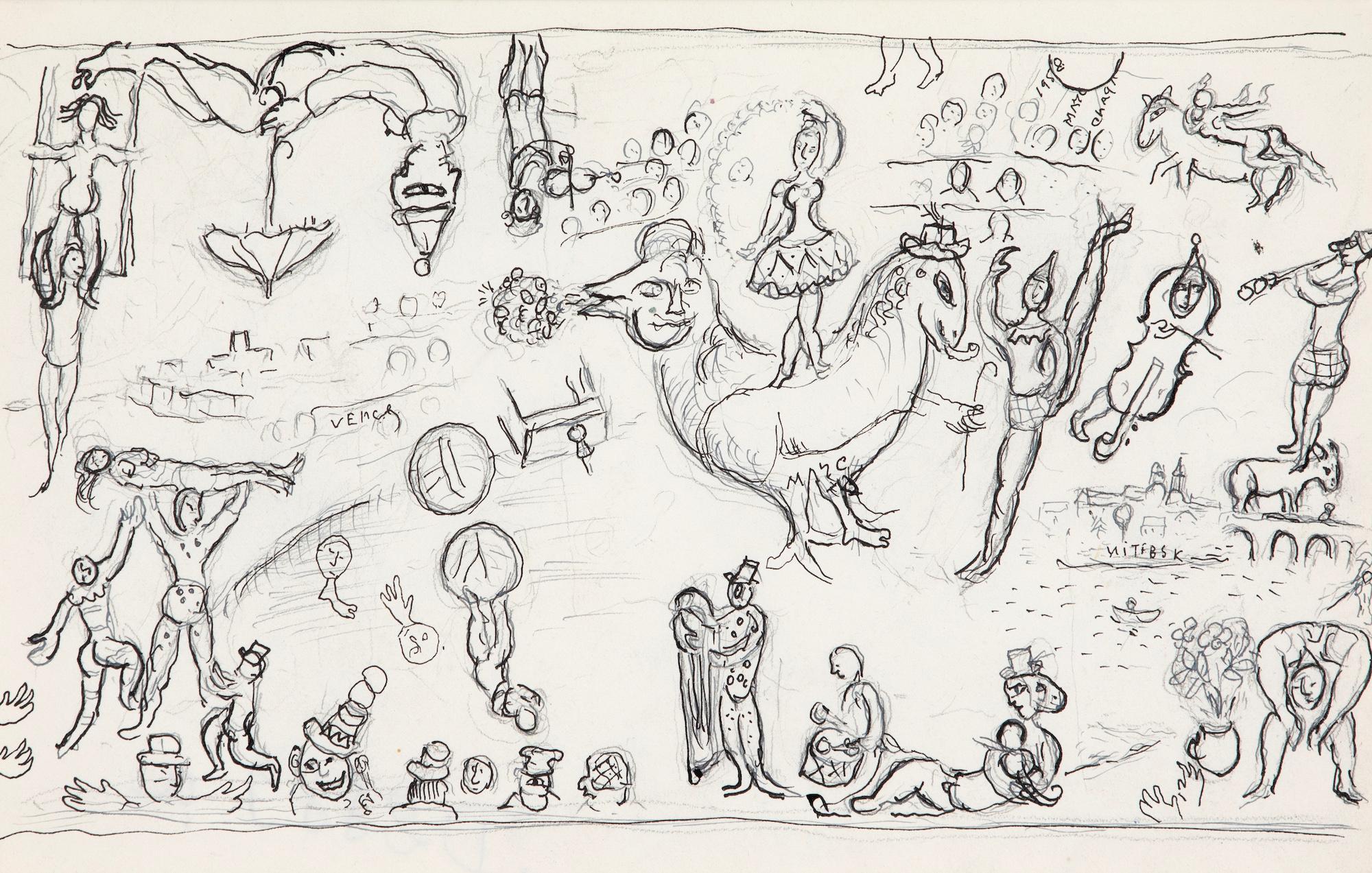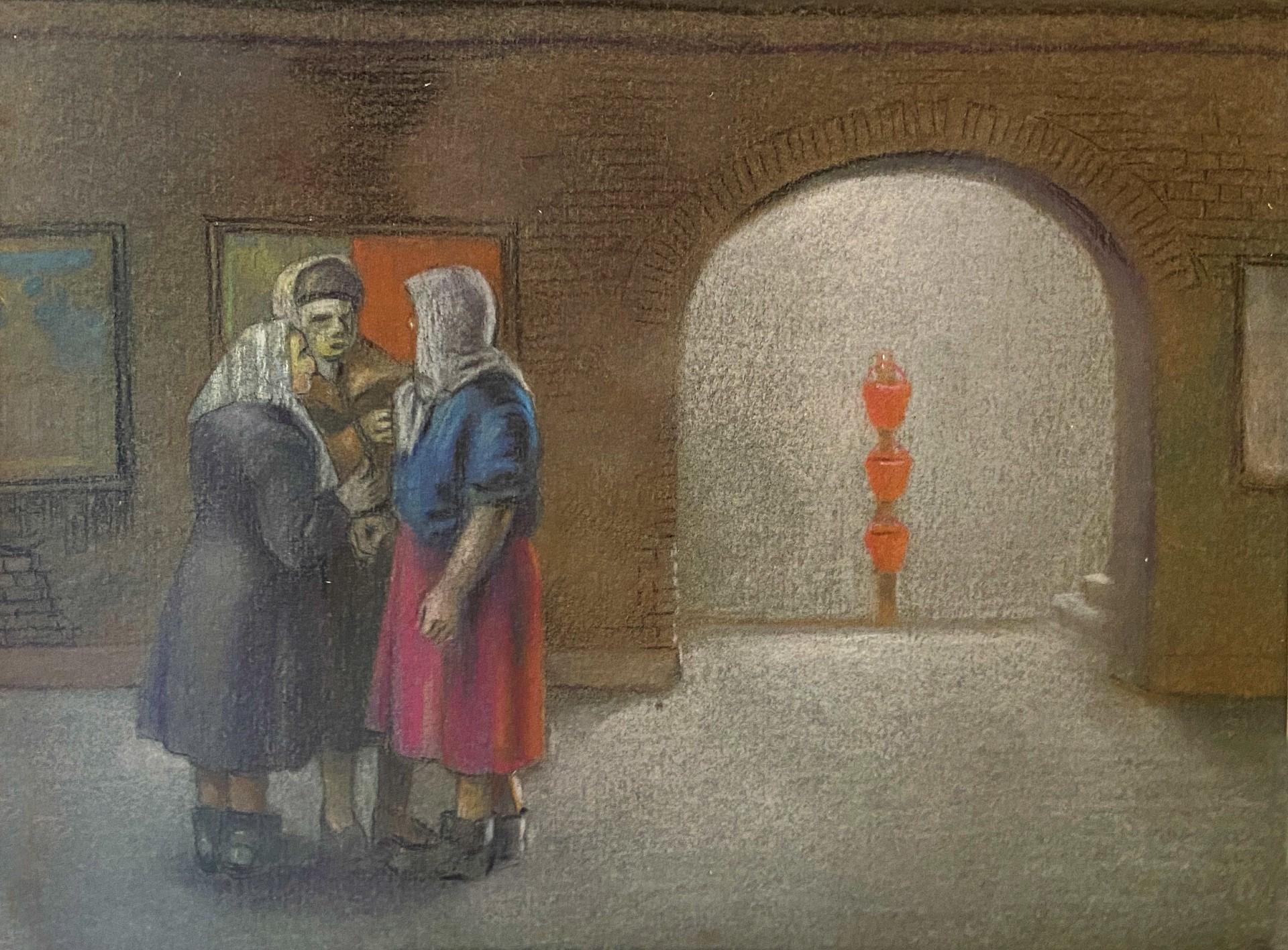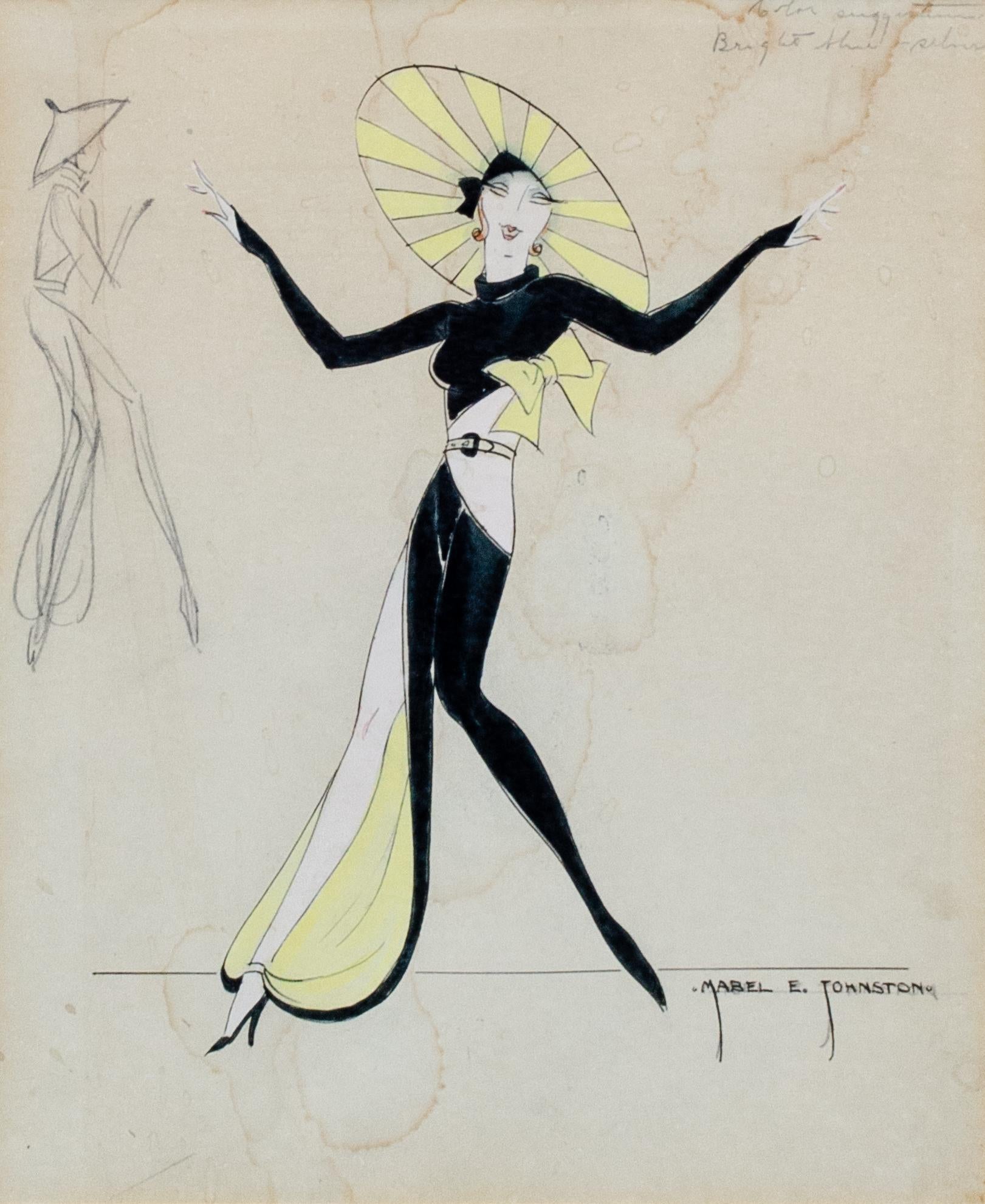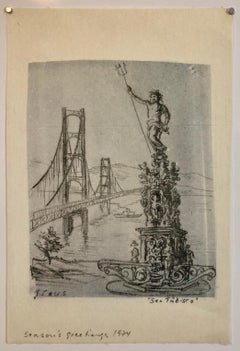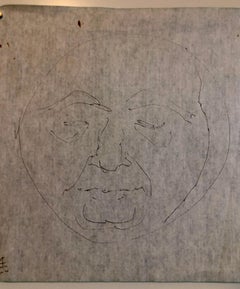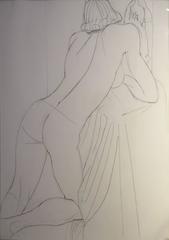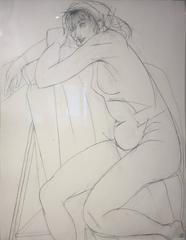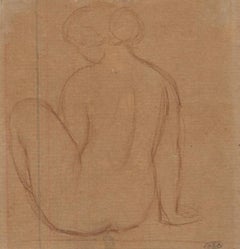Want more images or videos?
Request additional images or videos from the seller
1 of 6
Gottfried SalzmannTO MY FRIEND HARVEY DEAN....1974
1974
About the Item
- Creator:Gottfried Salzmann (1943, Austrian)
- Creation Year:1974
- Dimensions:Height: 14 in (35.56 cm)Width: 11 in (27.94 cm)
- Medium:
- Movement & Style:
- Period:
- Condition:Unframed. mild creasing. Measurements include mat.
- Gallery Location:Surfside, FL
- Reference Number:1stDibs: LU3821965433
About the Seller
4.9
Platinum Seller
These expertly vetted sellers are 1stDibs' most experienced sellers and are rated highest by our customers.
Established in 1995
1stDibs seller since 2014
1,543 sales on 1stDibs
Typical response time: 1 hour
More From This SellerView All
- TO MY FRIEND HARVEY DEAN....By Gottfried SalzmannLocated in Surfside, FLGottfried Salzmann , born on 26 March 1943 In Saalfelden near Salzburg in Austria is an Austrian painter. He lives and works in France (between Paris and Vence) since 1965. He studied from 1963 to 1965 at the school of fine arts of Vienne and then, from 1965 to 1968, at the Beaux-Arts of Paris. He exhibited for the first time in 1969 in Salzburg. He paints in watercolor, is also a draftsman, an engraver and a photographer; He sometimes painted on his pictures when he left the watercolor. In 1989, he illustrated by lithographs Situations de New York by Jean-Paul Sartre (edition Les Bibliophiles de France ). Prizes: 1972: David-Weill Drawing Prize, Paris - Theodor Körner Prize, Vienna 1975: Grand Prize of drawing of the "Salzburger Wirschatskammer" 1977: 1st international prize for watercolor in Rome...Category
20th Century Modern Figurative Drawings and Watercolors
MaterialsPaper, Pencil
- San Tubisco (Season's Greetings) Holiday Drawing Artwork Poseidon Trident BridgeBy Gottfried SalzmannLocated in Surfside, FLGottfried Salzmann , born on 26 March 1943 In Saalfelden near Salzburg in Austria is an Austrian painter. He lives and works in France (between Paris and Vence) since 1965. He studi...Category
1970s Modern Figurative Drawings and Watercolors
MaterialsPaper, Pencil
- Boston Abstract Expressionist Hyman Bloom Original Pencil Drawing Martin SumersBy Hyman BloomLocated in Surfside, FLThis is a unique artwork. This is an original Hyman Bloom drawing of fellow artist and his very good friend Martin Sumers.I believe this was drawn at the “variations of a theme” at Sumers gallery in NYC. The last two photos show a poster and a card from their shows. it is not included in this listing, it is just for provenance. Provenance: Acquired from the Sumers estate collection. Hyman Bloom (March 29, 1913 – August 26, 2009) was a Latvian-born American painter. His work was influenced by his Jewish heritage and Eastern religions as well as by artists including Altdorfer, Grünewald, Caravaggio, Rembrandt, Blake, Bresdin, James Ensor and Chaim Soutine. He first came to prominence when his work was included in the 1942 Museum of Modern Art exhibition "Americans 1942 -- 18 Artists from 9 States". MoMA purchased 2 paintings from the exhibition and Time magazine singled him out as a "striking discovery" in their exhibition review. His work was selected for both the 1948 and 1950 Venice Biennale exhibitions and his 1954 retrospective traveled from Boston's Institute of Contemporary Art to the Albright Gallery and the de Young Museum before closing out at The Whitney Museum of American Art in 1955. In a 1954 interview with Yale art professor Bernard Chaet, Willem de Kooning indicated that he and Jackson Pollock both considered Bloom to be “America’s first abstract expressionist”, a label that Bloom would disavow. Starting in the mid 1950s his work began to shift more towards works on paper and he exclusively focused on drawing throughout the 1960s, returning to painting in 1971. He continued both drawing and painting until his death in 2009 at the age of 9 Hyman Bloom (né Melamed) was born into an orthodox Jewish family in the tiny Jewish village of Brunavišķi in what is now Latvia, then part of the Russian Empire At a young age Bloom planned to become a rabbi, but his family could not find a suitable teacher. In the eighth grade he received a scholarship to a program for gifted high school students at the Museum of Fine Arts. He attended the Boston High School of Commerce, which was near the museum. He also took art classes at the West End Community Center, a settlement house. The classes were taught by Harold Zimmerman, a student at the School of the Museum of Fine Arts, who also taught the young Jack Levine at another settlement house in Roxbury. When Bloom was fifteen, he and Levine began studying with a well-known Harvard art professor, Denman Ross, who rented a studio for the purpose and paid the boys a weekly stipend to enable them to continue their studies rather than take jobs to support their families. He took Bloom and Levine on a field trip to the Museum of Modern Art in New York, where Bloom was impressed by the work of Rouault and Soutine and began experimenting with their expressive painting styles. In the 1930s Bloom worked sporadically for the Public Works of Art Project and the Federal Art Project (WPA), He shared a studio in the South End with Levine and another artist, Betty Chase. It was during this period that he developed a lifelong interest in Eastern philosophy and music, and in Theosophy. He first received national attention in 1942 when thirteen of his paintings were included in the Museum of Modern Art (MoMA) exhibition Americans 1942: 18 Artists from 9 States, curated by Dorothy Miller. MoMA purchased two of his paintings from that exhibition, and he was featured in Time magazine. The titles of his paintings in the exhibition reflect some of his recurring themes. Two were titled The Synagogue, another, Jew with the Torah; Bloom was actually criticized by one reviewer for including "stereotypical" Jewish images. He also had two paintings titled The Christmas Tree, and another titled The Chandelier, both subjects he returned to repeatedly. Another, Skeleton (c. 1936), was followed by a series of cadaver paintings in the forties, and The Fish (c. 1936) was one of many paintings and drawings of fish he created over the course of his career. Bloom was associated at first with the growing Abstract Expressionist movement. Willem de Kooning and Jackson Pollock, who first saw Bloom's work at the MoMA exhibition, considered Bloom "the first Abstract Expressionist artist in America." In 1950 he was chosen, along with the likes of de Kooning, Pollock, and Arshile Gorky, to represent the United States at the Venice Biennale. That same year Elaine de Kooning wrote about Bloom in ARTnews, noting that in paintings such as The Harpies, his work approached total abstraction: "the whole impact is carried in the boiling action of the pigment". In 1951 Thomas B. Hess reproduced Bloom's Archaeological Treasure in his first book, Abstract Painting: Background and American Phase, along with works by Picasso, Pollock, and others. Both de Kooning and Hess remarked on Bloom's expressive paint handling, a key characteristic of Abstract Expressionist painting. As abstract expressionism dominated the American art world, Bloom became disenchanted with it, calling it "emotional catharsis, with no intellectual basis." In addition, instead of moving to New York to pursue his career, he opted to stay in Boston. As a result he fell out of favor with critics and never achieved the kind of fame that Pollock and others did. He disliked self-promotion and never placed much value on critical acclaim. Many of Bloom's paintings feature rabbis, usually holding the Torah. According to Bloom, his intentions were more artistic than religious. He began questioning his Jewish faith early in life, and painted rabbis, he claimed, because that was what he knew. Over the course of his career he produced dozens of paintings of rabbis...Category
20th Century Modern Figurative Drawings and Watercolors
MaterialsPaper, Pencil
- German Neo Expressionist Graphite Pencil Drawing Erwin Pfrang Nolan Gallery NYCLocated in Surfside, FLErwin Pfrang, German (b. 1951) Graphite Pencil on paper Framed 20 X 20.5, sheet 12.5 X 13 Hand signed lower left Erwin Pfrang (born 1951, in Munich) is a German painter and printmaker. Pfrang studied at the Academy of Fine Arts in Munich from 1974–79. Later he spent many years as an independent artist in Montepulciano, Val d’Orcia and Catania, Italy, interrupted by stays in Munich and Augsburg. He presently lives and works in Berlin. Erwin Pfrang is the grandson of the Munich folk comedian Konstantin Pfrang. Carla Schulz-Hoffmann makes an attempt at characterising the painter: “An artist such as Erwin Pfrang inhabits an alternative world, a tiny microcosm of subjectivity, and lives that life uncompromisingly, with all the limitations and hardships that it entails. Among twentieth-century artists a comparable stance can be encountered perhaps in Jean Fautrier, but certainly in Otto Wols. His oeuvre relates in its figuration to Bosch or James Ensor and his oil painting to Lucian Freud in its painterly quality. Erwin Pfrang is represented by gallerists Fred Jahn, Munich (Exhibition: Don’t Forget Your Mask: Don’t (Part I: Don’t Forget Your Mask), Forget (Part II: Don’t Forget Your Mask), Your Mask (Part III: Don’t Forget Your Mask)Artists: Imi Knoebel, Barry Le Va, Karel Appel, Alexi Tsioris, William N. Copley, Isa Genzken...Category
Early 2000s Neo-Expressionist Figurative Drawings and Watercolors
MaterialsPaper, Pencil, Graphite
- Original Pencil Drawing from PIERRE, "I DONT CARE" (CBS 1970s)By Maurice SendakLocated in Surfside, FLAn original animation drawing from the CBS-TV broadcast of Sendak's "REALLY ROSIE" - (this was the first time "Rosie" appeared anywhere other than Sendak's original book) - this cel is from the PIERRE, "I DONT CARE" sequence. this is the original pencil drawing from the 1970s. it is from the estate of the film producer Dan Hunn. Maurice Bernard Sendak, June 10, 1928-2012 Dubbed by one critic “the Picasso of children’s literature” and once addressed by former President Bill Clinton as “the King of Dreams,” Maurice Sendak illustrated nearly a hundred picture books throughout a career that spanned more than 60 years. Some of his best known books include Chicken Soup...Category
1970s Pop Art Figurative Drawings and Watercolors
MaterialsPaper, Carbon Pencil
- German Neo Expressionist Graphite Drawing Erwin Pfrang Nolan Eckman Gallery NYCLocated in Surfside, FLErwin Pfrang, German (b. 1951) Graphite on paper Partner Exchange (2001) Framed 21 X 14.5 sheet 13.75 X 7.25 Erwin Pfrang (born 1951, in Munich) is a German painter and printmaker. Pfrang studied at the Academy of Fine Arts in Munich from 1974–79. Later he spent many years as an independent artist in Montepulciano, Val d’Orcia and Catania, Italy, interrupted by stays in Munich and Augsburg. He presently lives and works in Berlin. Erwin Pfrang is the grandson of the Munich folk comedian Konstantin Pfrang. Carla Schulz-Hoffmann makes an attempt at characterising the painter: “An artist such as Erwin Pfrang inhabits an alternative world, a tiny microcosm of subjectivity, and lives that life uncompromisingly, with all the limitations and hardships that it entails. Among twentieth-century artists a comparable stance can be encountered perhaps in Jean Fautrier, but certainly in Otto Wols. His oeuvre relates in its figuration to Bosch or James Ensor and his oil painting to Lucian Freud in its painterly quality. Erwin Pfrang is represented by gallerists Fred Jahn, Munich (Exhibition: Don’t Forget Your Mask: Don’t (Part I: Don’t Forget Your Mask), Forget (Part II: Don’t Forget Your Mask), Your Mask (Part III: Don’t Forget Your Mask)Artists: Imi Knoebel, Barry Le Va, Karel Appel, Alexi Tsioris, William N. Copley, Isa Genzken...Category
Early 2000s Neo-Expressionist Figurative Drawings and Watercolors
MaterialsPaper, Graphite
You May Also Like
- Cynthia BackBy Fritz BultmanLocated in New Orleans, LAFritz Bultman set himself apart from other Abstract Expressionists with his meticulously organized abstract compositions, use of sculpture, and the adoption of collage as a core prac...Category
1980s Modern Figurative Drawings and Watercolors
MaterialsGraphite, Paper
Price Upon Request - MarianneBy Fritz BultmanLocated in New Orleans, LAFritz Bultman set himself apart from other Abstract Expressionists with his meticulously organized abstract compositions, use of sculpture, and the adoption of collage as a core prac...Category
1980s Modern Figurative Drawings and Watercolors
MaterialsGraphite, Paper
Price Upon Request - Nude Woman Pencil Drawing by Artistide MaillolBy Aristide MaillolLocated in Roma, ITSanguine drawing on paper, XIX-XX centuries. Dimensions : 19,6 x 22,5 cm This original sanguine drawing is signed with the artist’s monogram “M” at the lower right corner of the pa...Category
19th Century Modern Figurative Drawings and Watercolors
MaterialsPaper, Color Pencil
- French Modern Drawing by Jean Hélion - Veil HommeBy Jean HélionLocated in Paris, IDFVeil Homme 1947 drawing 26,9 x 21 cm Registered on the catalogue raisonné with inventory number : N°0252 cat. B sold without frame about Jean Hélion (April 21, 1904 – October 27, 19...Category
1960s Modern Figurative Drawings and Watercolors
MaterialsPencil, Paper
- “Seated Model in Red Bra”By Raphael SoyerLocated in Southampton, NYOriginal graphite and colored pencil drawing on archival paper of a woman seated in a red bra by the well known American artist, Raphael Soyer. Signed lower r...Category
1950s American Modern Figurative Drawings and Watercolors
MaterialsGraphite, Archival Paper, Color Pencil
$1,075 Sale Price32% Off - 1940s Charcoal and Pencil Portrait of a ManLocated in Arp, TXArtist Unknown "Tie and Glasses" c. 1940s Charcoal and pencil on paper 13.5"x17" image 15.5"x19" paper unframed $250 Unsigned *Listed price reflects custom framing selected by seller...Category
1940s Modern Portrait Drawings and Watercolors
MaterialsPaper, Charcoal, Carbon Pencil
